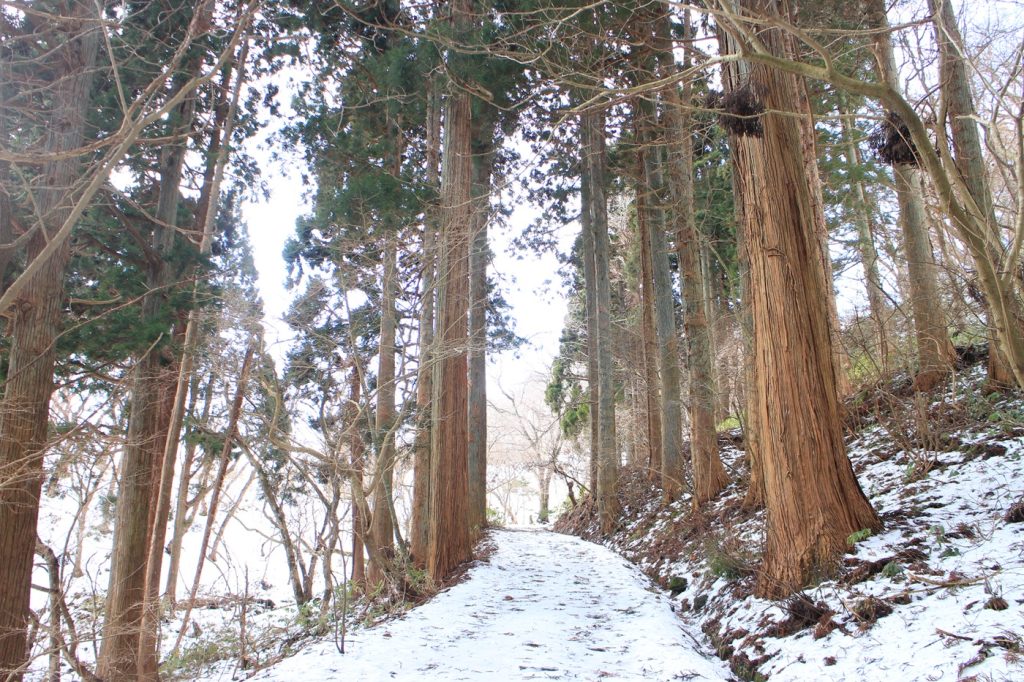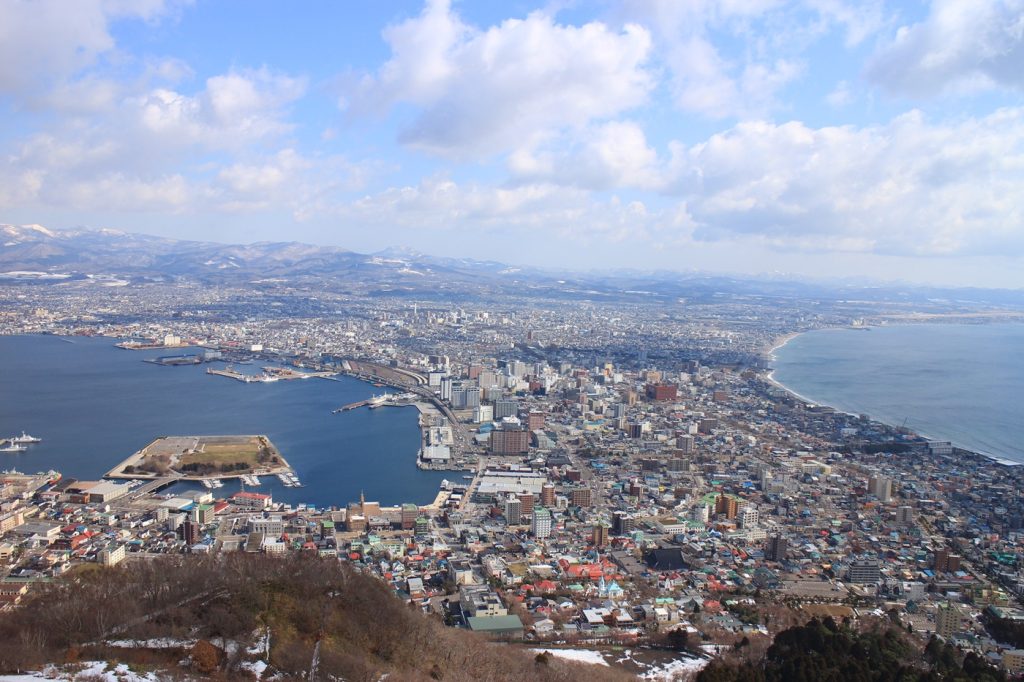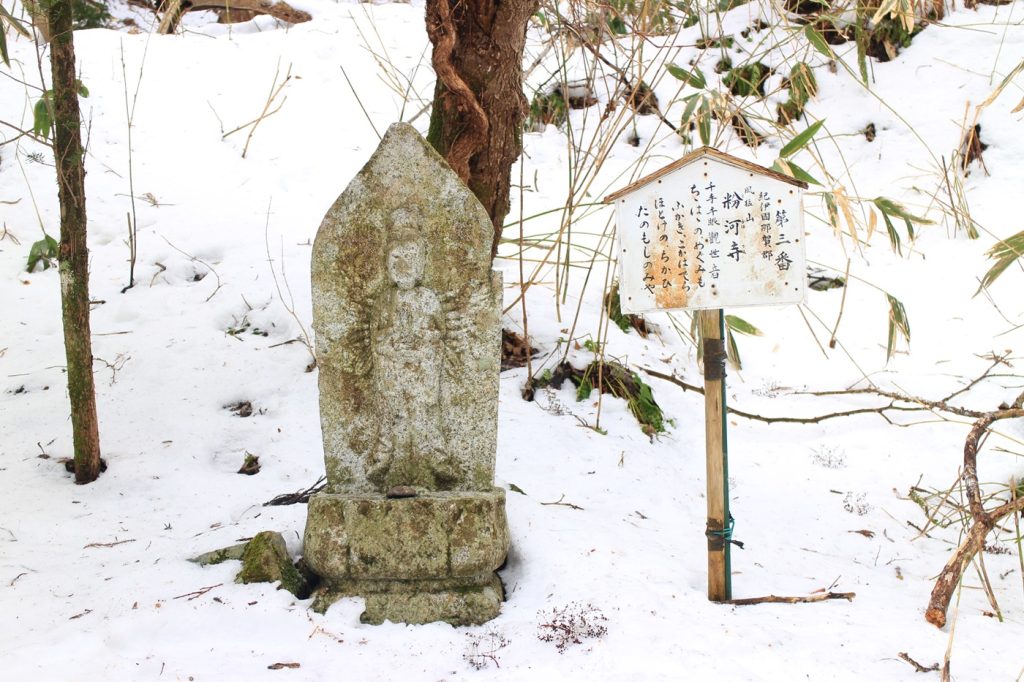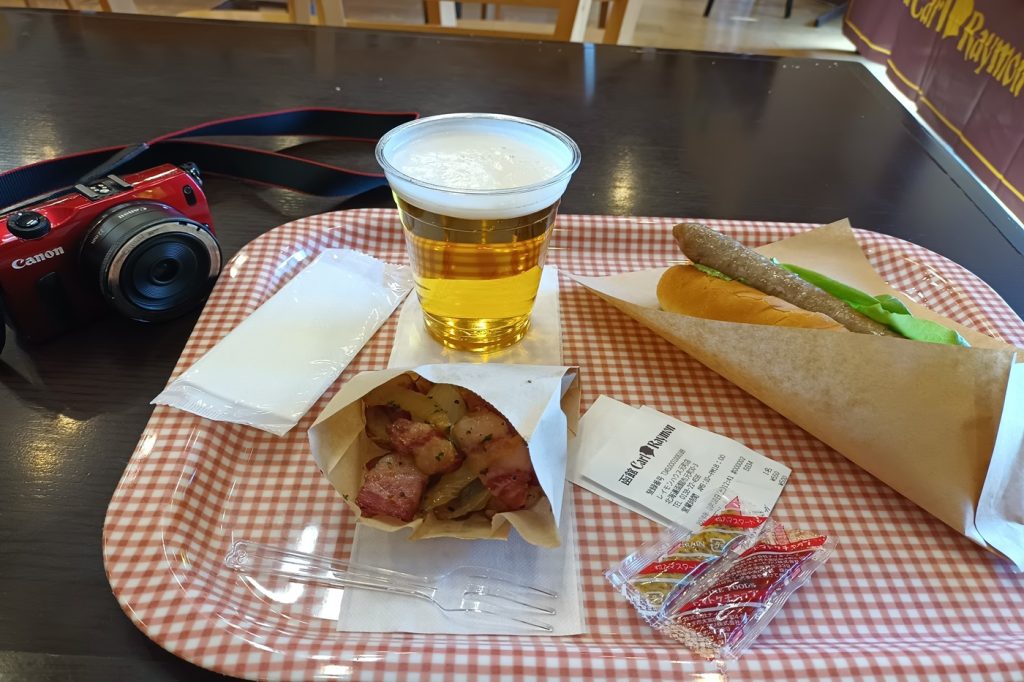Hakodate, Hokkaido Mar.15 – 17, 2024
Climbing Hakodate Yama and Carl Raymon’s hotdog
There is no snow in downtown. It gets around 0 C degree in the morning. It is still winter here. However, the sunshine is different from the winter’s one. I can feel spring is not far. It was early June when I visited last year. I remember windy and chilly weather welcomed me at that time. Like last time, weather is not good. It is raining occasionally. I’ve begun to love this town since the last visit. It is a port town like the place I was born and raised. There are old western style buildings and Christian churches which remind me of this city’s history and its connections with foreign countries in the early 20’s century. I like the exotic atmosphere of this town. It has trams going through downtown like we used to have in my town Yokohama. (Trams used to crisscross the town of Honmoku until the 1970’s.) There are markets like an old-school market like Jiyu Ichiba where small businesses gather under one roof. Those make me remember my childhood in Yokohama back in the 1960’s.
On my second day, I left the hotel as soon as I finished breakfast and headed to Hakodate Yama or Mt.Hakodate. I walked through Hakodate Morning fish Market streets, the area many fish mongers and seafood restaurants are gathered near Hakodate station. It is one of the popular tourist attractions in town. Tourists come to the area to have breakfast or shop fresh seafood, a delicacy of Hokkaido. A guy standing in front of a shop talked to me with smile and asked what I have in mind for souvenir when I was passing by. Actually I wanted to buy something. But I had nothing in mind. He kept talking friendly. I stopped and asked what is in season now and what is popular for visitors to buy, etc. He answered to my questions friendly. I decided to buy three hairy crabs, a half of a fresh sermon etc and asked him to send them to my home by delivery service. It was 15,000 yen including delivery. I heard from him that the shops in the streets close by noon. So I thought it was good occasion for me to buy as they would have closed by the time I had returned from the mountain.

I walked towards the mountain through Akarenga Soko, the red brick warehouses and reached the entrance of the trail near the ropeway station within 30 minutes or so. I started to walk toward the top of the mountain around 9 o’clock . The trail was covered with snow. During my climbing of about an hour or so, I passed with a couple of hikers who were going down. They may have started very early in the morning and coming down. I could see the Tsugaru Strait from the trail. Some guidebooks say you can see the Honshu mainland if weather is fine. I was not able to see this time. I realized the trail is lined with cypress trees. I learned later that the mountain was almost bald about 200 years ago after people had cut down the trees completely to use them for heating or fuel. They had stopped logging and planted seedlings of ciders until it recovered to the current level. The mountain has a wide variety of flora and fauna. British scientist Thomas Wright Blakiston found the fauna boundary across the Tsugaru straight between Hokkaido and Honshu. Later this line came to be known as the Blakiston Line. He came to Japan in the 1860’s and spent time in Hakodate. His monument is stood on the top of the mountain near the ropeway station.

I got to the ropeway station on the mountain in about an hour. From the observation deck on the station floor, I had a full view of the city and its vicinity. I was able to see the route where I was walking from the hotel this morning. You can see the Hakodate Airport’s runway on the right. I can see the roofs of Churches or temple below. The mountain had been an island created by volcanic movements and separated from Hokkaido before it got connected after long periods of sediment accumulations and became what it looks what it is now.

I walked down the mountain through a different route looking down the city, which I found steep and not good where the slop got muddy with melting snow. During the hiking, I sew a lot of statues of goddess of mercy on the trail. They were originally placed by a philanthropist around 1830, who thought people could get the same benefit of Bodhisattva by walking and seeing them as the pilgrims who actually visited 33 statues when it was difficult to make a Pilgrimage to 33 Temples in West Japan for ordinally people back then. During the mountain was used by the military, they were removed during the war. The current statues were recreated and placed after the war.

At Raymon House, I had a hotdog and a German potato salad washing down with beer. I felt refreshed after climbing and the lunch at the shop. I decided to call it a day.